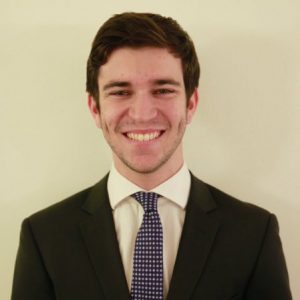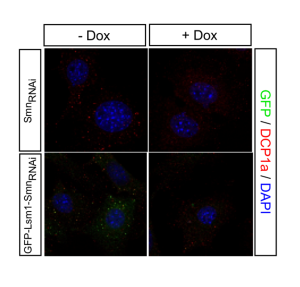This is the next in a series of posts by recipients of the Career Services Summer Funding Grant. We’ve asked funding recipients to reflect on their summer experiences and talk about the industries in which they’ve been spending their summer. You can read the entire series here.
This entry is by Daniel E. Palmieri, COL ’17
 Over the course of the summer, I was fortunate enough to spend my time in Dr. Pellizzoni’s lab at Columbia University, where I found a truly dedicated and intelligent group of researches, all of whom imparted me with lasting knowledge of the world of Spinal Muscular Atrophy (SMA). During my freshman summer, I had worked with a colleague of Dr. Pellizzoni, Dr. Bozzoni, at La Sapienza University of Rome, studying the role of circular RNAs in ALS and muscular dystrophy. In hopes of continuing my research on neurodegenerative diseases, I was put in touch with Dr. Pellizzoni in hopes of working with him at Columbia University. I had been waiting since the end of my freshman summer to work with him, and thankfully Career Services provided me with the possibility of living in New York to work in Dr. Pellizzoni’s lab.
Over the course of the summer, I was fortunate enough to spend my time in Dr. Pellizzoni’s lab at Columbia University, where I found a truly dedicated and intelligent group of researches, all of whom imparted me with lasting knowledge of the world of Spinal Muscular Atrophy (SMA). During my freshman summer, I had worked with a colleague of Dr. Pellizzoni, Dr. Bozzoni, at La Sapienza University of Rome, studying the role of circular RNAs in ALS and muscular dystrophy. In hopes of continuing my research on neurodegenerative diseases, I was put in touch with Dr. Pellizzoni in hopes of working with him at Columbia University. I had been waiting since the end of my freshman summer to work with him, and thankfully Career Services provided me with the possibility of living in New York to work in Dr. Pellizzoni’s lab.
During my time in the lab, I was assigned to multiple projects, all of which focused on studying the interactions of  “LSm proteins” and SMN, the protein involved in spinal muscular atrophy. My lab experience beforehand had been largely biochemical, but this time I was exposed to cell culture and mouse work, which allowed me to study the disease in a completely new way. I was personally responsible for establishing cell lines expressing the proteins that we were interested in studying, which actually took several weeks to accomplish. As such, I was able to watch my project evolve from drawings on a notebook to actual biological experiments. In this post, I’ve included a fluorescent picture of two of my cell lines, all of which express a fluorescent protein known as GFP. Notice how the green disappears dots (GFP) disappear in the bottom photo from left to right, showing that the cellular model was working properly.
“LSm proteins” and SMN, the protein involved in spinal muscular atrophy. My lab experience beforehand had been largely biochemical, but this time I was exposed to cell culture and mouse work, which allowed me to study the disease in a completely new way. I was personally responsible for establishing cell lines expressing the proteins that we were interested in studying, which actually took several weeks to accomplish. As such, I was able to watch my project evolve from drawings on a notebook to actual biological experiments. In this post, I’ve included a fluorescent picture of two of my cell lines, all of which express a fluorescent protein known as GFP. Notice how the green disappears dots (GFP) disappear in the bottom photo from left to right, showing that the cellular model was working properly.
What made the experience truly memorable was the talented group of people that I was able to work with in the lab. During my stay, I worked under a post-doctoral student who taught me more than I could have imagined in just 10 weeks, imparting me with invaluable knowledge that I will continue to use in my future research. I also directly assisted a PhD student in her SMA research projects, allowing me to explore the disease from views not directly related to my own project.
Every week, a member of the lab (there were 5 others) was required to give a lab presentation, detailing the progress of their research. I was able to give this presentation at the very end of my internship, explaining how I had gone about my research and the challenges that I had encountered along the way. It was an opportunity to demonstrate what I had learned from my time in the lab and to practice research presentations, an invaluable skill to any future researcher.
Overall, my time at Columbia University was one of the most rewarding lab experiences that I have ever had, and I am beyond grateful that I was able to participate in such a phenomenal internship.

